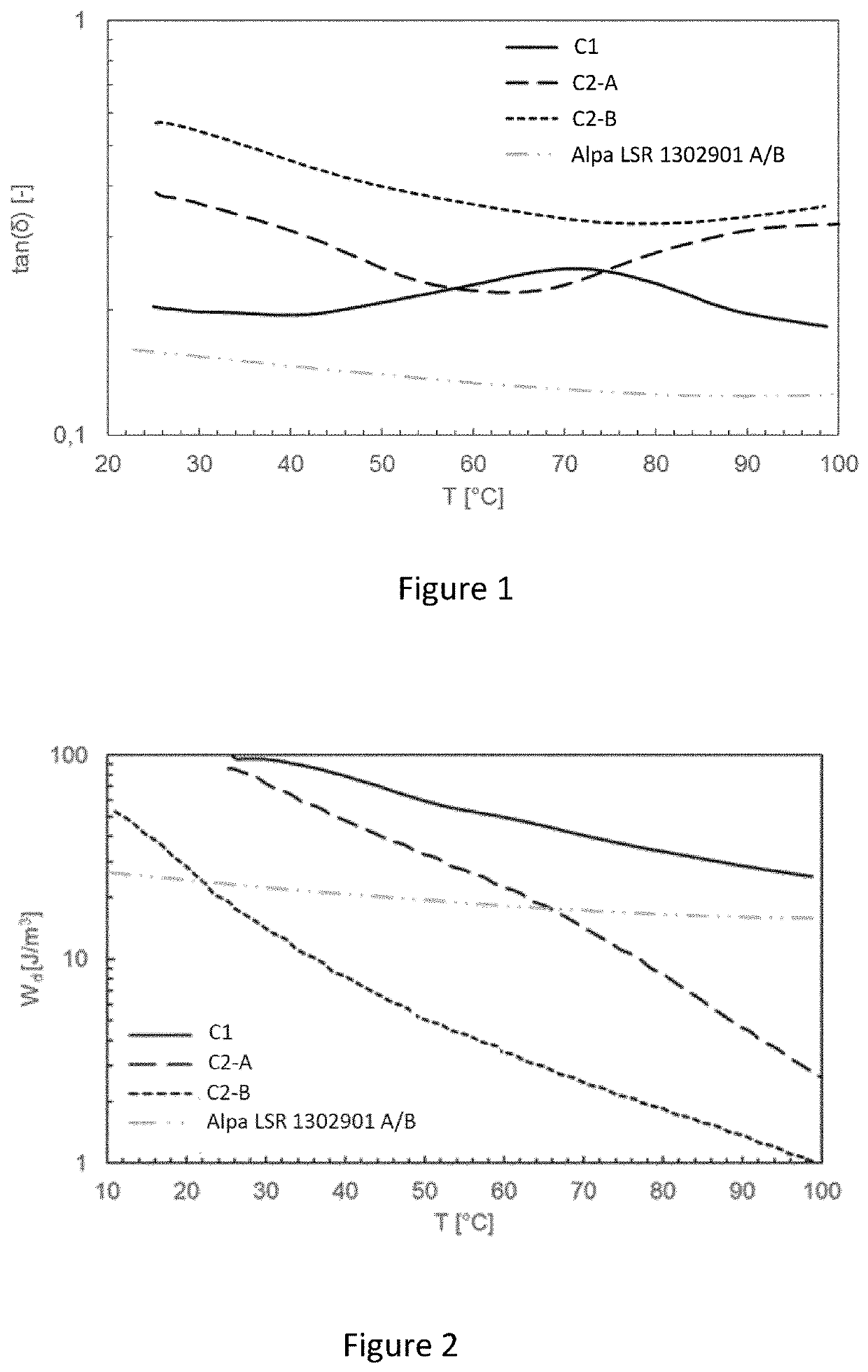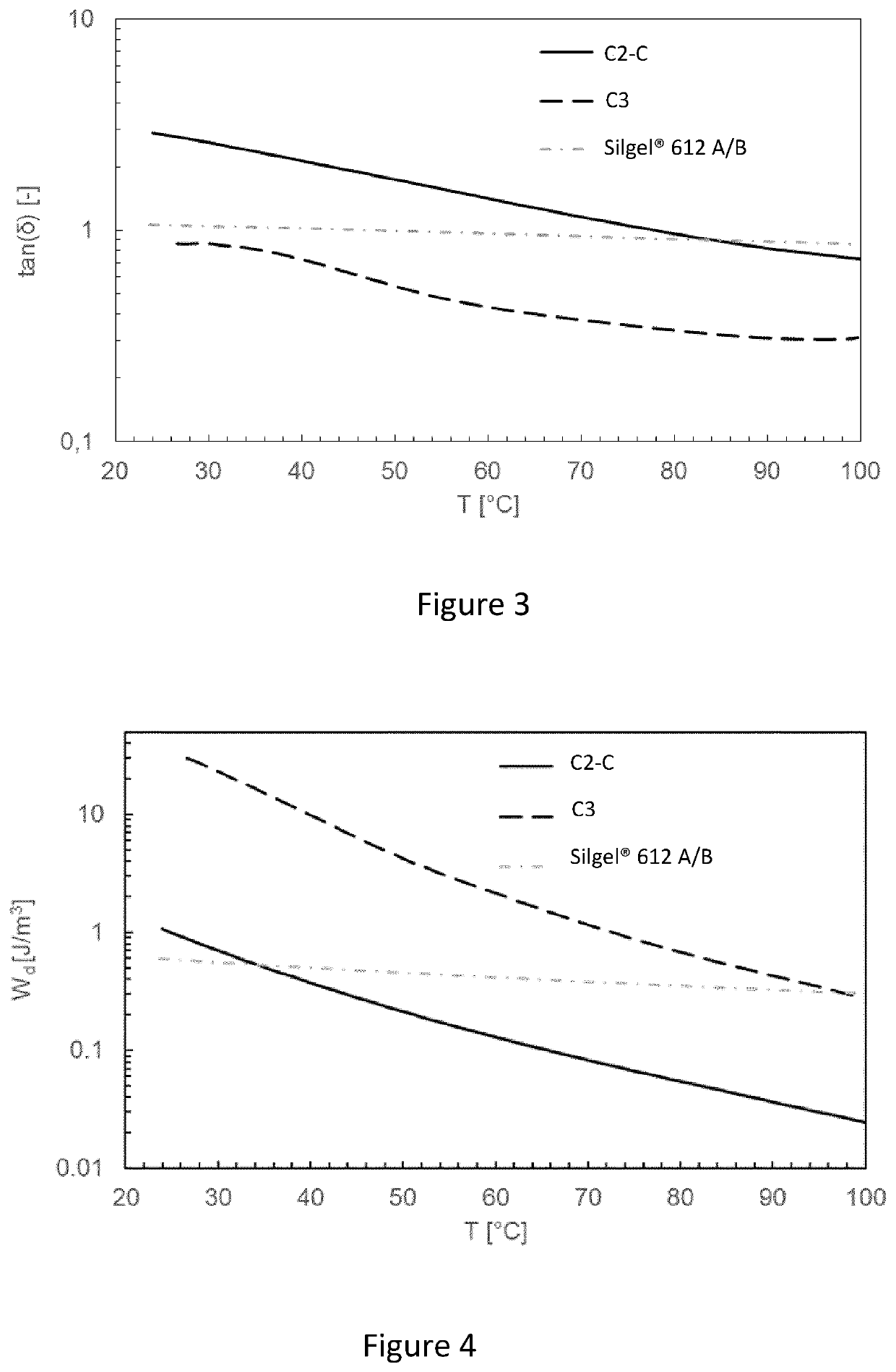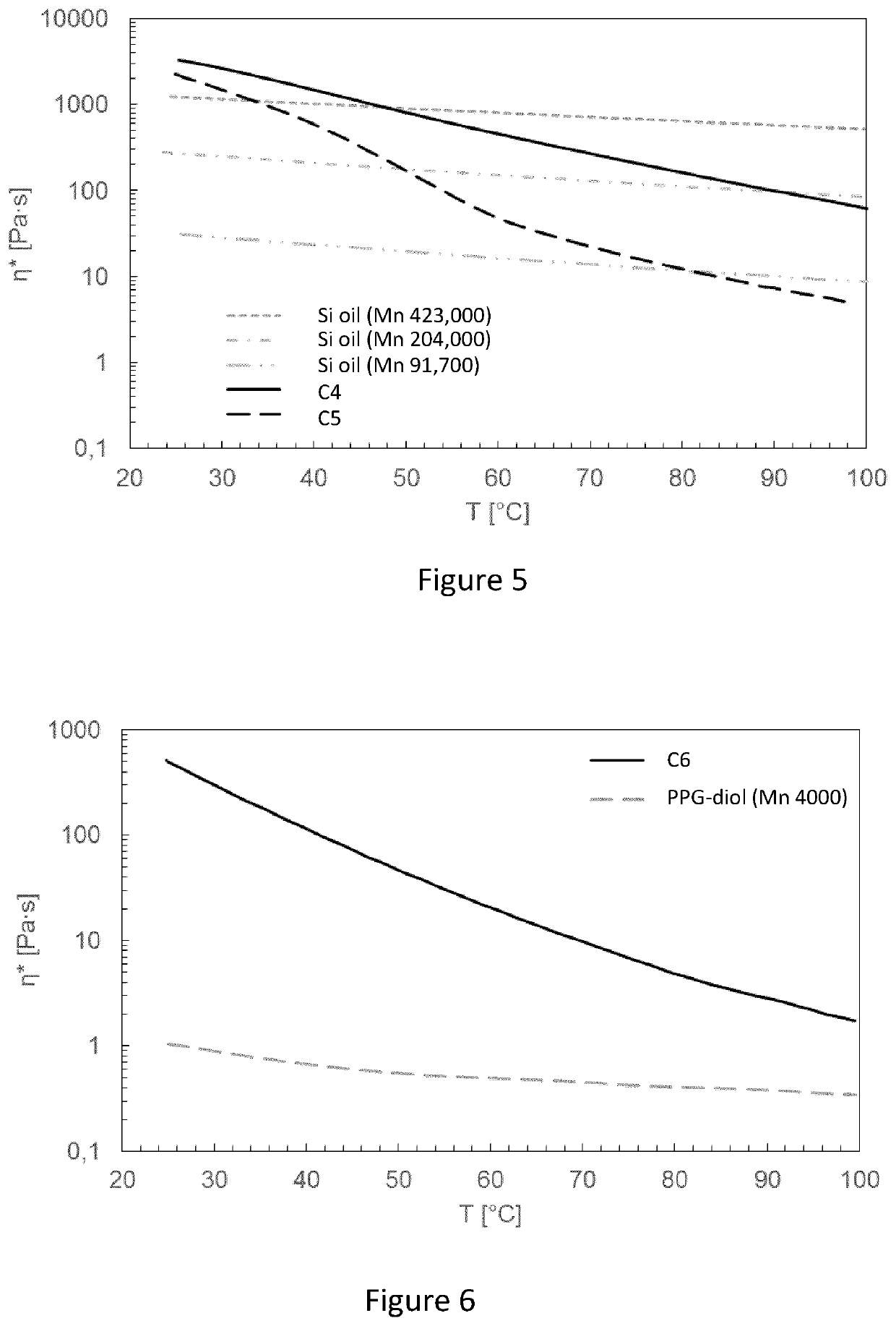Method for damping shocks and vibrations
- Summary
- Abstract
- Description
- Claims
- Application Information
AI Technical Summary
Benefits of technology
Problems solved by technology
Method used
Image
Examples
synthesis examples
Example 1—Synthesis of a Polymer (P1A) of Formula
[0184]
[0185]wherein Rs is a poly(dimethylsiloxane) chain, Mn 3444 [herein after (P1A)].
[0186]A glass reactor was charged with polymer P2F-1 (100 g, 33.33 mmol, Mn 3000) and dried under vacuum for two hours under mechanical stirring at 70° C. 1,4-dioxane (100 ml) and trimellitic anhydride (15.95 g, 83 mmol) were added to the reactor and stirred at 100° C. for 18 hours. The reaction completion was monitored by 1H-NMR. The NMR analyses confirmed the obtainment of title product, with purity higher than 99%.
example 2
of a Polymer (P1B) of Formula
[0187]
[0188]wherein Rs is a poly(dimethylsiloxane) chain, Mn 6256 [herein after (P1B)].
[0189]A glass reactor was charged with polymer P2F-2 (100 g, 20 mmol, Mn 5000) and dried under vacuum for two hours under mechanical stirring at 70° C. 1,4-dioxane (100 ml) and trimellitic anhydride (9.606 g, 50 mmol) were added to the reactor and stirred at 100° C. for 24 hours. The reaction completion was monitored by 1H-NMR. The NMR analyses confirmed the obtainment of title product, with purity higher than 99%.
example 3
of a Polymer (P1C) of Formula
[0190]
[0191]wherein Rs is a poly(dimethylsiloxane) chain, Mn 27300 [herein after (P1C)].
[0192]A glass reactor was charged with polymer P2F-3 (100 g, 3.7 mmol, Mn 27000) and dried under vacuum for two hours under mechanical stirring at 70° C. 1,4-dioxane (100 ml) and trimellitic anhydride (1.9 g, 10 mmol) were added to the reactor and stirred at 100° C. for 24 hours. The reaction completion was monitored by 1H-NMR. The NMR analyses confirmed the obtainment of title product, with purity higher than 99%.
PUM
| Property | Measurement | Unit |
|---|---|---|
| Length | aaaaa | aaaaa |
| Time | aaaaa | aaaaa |
| Molecular weight | aaaaa | aaaaa |
Abstract
Description
Claims
Application Information
 Login to View More
Login to View More - R&D
- Intellectual Property
- Life Sciences
- Materials
- Tech Scout
- Unparalleled Data Quality
- Higher Quality Content
- 60% Fewer Hallucinations
Browse by: Latest US Patents, China's latest patents, Technical Efficacy Thesaurus, Application Domain, Technology Topic, Popular Technical Reports.
© 2025 PatSnap. All rights reserved.Legal|Privacy policy|Modern Slavery Act Transparency Statement|Sitemap|About US| Contact US: help@patsnap.com



